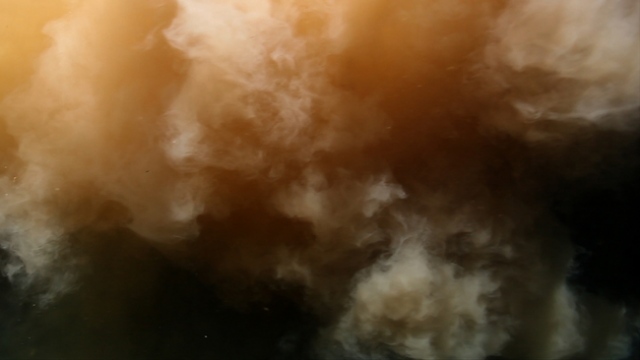-
Waters meet: Breath
By Roy Exley
Written for Photomonitor 2013
Clandestine worlds, alien worlds, the exotic other, hold a perennial fascination for us. The ideas of such alternative worlds can be expressed in so many ways in the arts – cinema, of course, thrives on the representation of such phenomena. Romanticism thrived on fantasy, ‘The Picturesque’, ‘The Gothic’, ‘The Pre-Raphaelites’, ‘Art Nouveau’, just a few of the numerous Romantic genres, each responding to this desire for the exotic, the alien, the other-worldly. Our appetites for such fantasy eventually became jaded. Such desires for the exotic are now catered for by the ubiquitous natural history films on TV – exotic locations, exotic creatures, not now founded on fantasy but on the real world, to which most of us would not have access if it weren’t for the wonders of modern technology. We have become addicted to the spectacular, but the exotic does not have to be so spectacular, it can also be subtle.
This access to the exotic does not merely satisfy an escapist mentality, but it also tells us something about ourselves, only by bumping up and testing ourselves against the other do we define who we are. There is a good deal of the exotic enmeshed in Emma Critchley’s photographic and video works, in that they usher us into worlds and situations to which we would not normally have access, and the experience of which taps the ineffable. They conjure strange visions that challenge our well-rehearsed, loosely-fitting comfort zones – underwater scenes that make us want to hold our breath while we lose all sense of time. In her video ‘Waters Meet: Breath’, a tributary stream unburdens itself of its suspension of silt, at its confluence with the main stream. Delicate pulses of silt are unfurled into the stronger flow in intricate spiral and curlicue forms, like smoke in the water, that are instantly stretched, diluted and then dissolved by the stronger and clearer dominant current. As each thrust of silt is absorbed by, and vanishes in, this current, another instantly follows on only to be likewise transmuted. This endless process varies only in its waxing and waning in tune with variations in rainfall. It’s a slower world down there, where the random and the rhythmic listlessly vie for precedence in this parallel existence, this unseen other, existing for us only through Critchley’s patient and painstaking camera work. It makes us think, perhaps, about the delicacy of micro-worlds that hide within and yet underpin the greater scheme of things. As the pace of existence speeds up through the digitalisation of our activities, we are confronted more and more by surfaces that have no apparent connection with each other but are brought into relationship through the workings of micro-electronics and, consequently, things become less and less real, more and more virtual, and superficiality replaces significance or rather the superficial comes to appear significant. As we lose contact with the depth of things, with their intricacy, as a result of our tighter and tighter economics of time, we become less and less rooted in the natural world. Critchley’s video subtly and gently reminds us of, and re-connects us with, that preternaturally different pace of the natural world.
Contrapuntal with the visual rhythms played out by the pulses of unfurling silt, depicted in this video, are the sonic rhythms of echoic breathing, contained in the accompanying soundtrack. The recorded sounds of the deep-breathing of a diver preparing him or herself to do a free-dive – an uncanny sequence of sounds, that is in itself other-worldly – confront our ears. This is actually predicated on the very natural and non-exotic activity of breathing. The pulses of silt (the breathing of the water?) and the pulses of the divers breathing, while being contrapuntal and disconnected, nevertheless convey an impression of empathy that propagates a feeling of calm and tranquillity that is in turn reinforced by that ambience of timelessness that pervades the work.
‘Mesmeric’ would seem to be the perfect adjective to use as a description of this work. Critchley’s fascination for underwater environments and events that take place there, shines through, conveying senses of both awe and respect for a milieu that that is as challenging as it is exhilarating. By imbuing real scenes with a sense of fantasy without the use of digital manipulation, Critchley uses her imagination to create images that motivate the viewer’s own imagination. Critchley’s canon of work is quite divergent and includes underwater portraits, variably expressing both stasis and motion, taken in pools or tanks, as well as images both still and moving in non-populated natural waters. All this work is under the spell of the seductive qualities of water as a unique photographic environment, with all its distortions of time and space. Long may her love-affair with the submerged continue.
